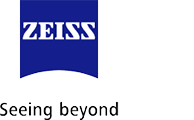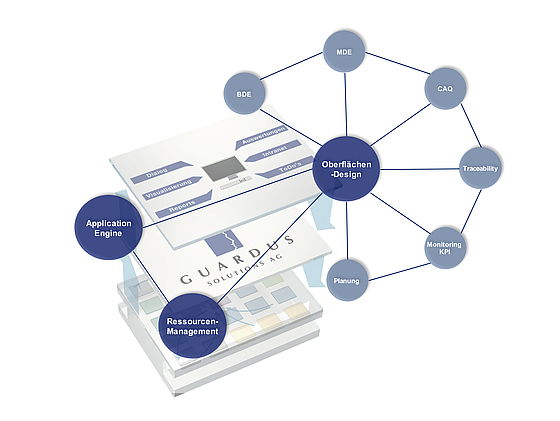Who actually decides whether a business model is sustainable in the context of the Industry 4.0 visions in the future? The answer: elephants, team players and those who can think together along the same lines. The participants in the debate of the group of experts of GUARDUS Solutions AG were provided with details about this surprising statement by two declared professionals in this matter: Prof. Claus Oetter, deputy CEO of the Software Association as well as head of the “IT@Automation” forum in the VDMA in Frankfurt am Main, and Andreas Kirsch, member of the executive board of the MES manufacturer from Ulm. A summary of the participant Monika Nyendick, specialised journalist in Ulm.
„IT-based intelligence is the central requisite for exploiting the chances of the digital transformation in a targeted way and facing the risks with the adequate foresight and clarity in the own strategy” – this is the way in which the introductions of an Industry 4.0 conference mostly begin. A further common characteristic: A lot is said, but little is actually understood. In order to prevent this, the GUARDUS Talk that recently took place in Ulm focused on concrete explanations, tangible contents and efficient methods.
Industry 4.0 is not a trend topic that falls into somebody’s lap all of a sudden. It is rather a logical consequence of an increasingly digitised society. What has initially started with the mass circulation of mobile terminal devices in the consumer environment, nowadays is moving into the productive economy – no more, no less. Speaking about Industry 4.0, “the essential basic elements reside in the interlocking of the production processes with the communication possibilities of the Internet”, said the Federal Ministry for Economy and Energy. Yet, which possibilities and symbioses are actually meant?
Look Who’s Talking!
From a bird’s-eye view, Industry 4.0 resembles a dissonance of keywords and actors. Many speak about cyber physical systems, highly automated production lines, integrated software and machinery landscapes and of course – at the very front – business apps to support the coming, mobile work environment 4.0. By delving into the subject matter with the help of the experts Prof. Claus Oetter (VDMA) and Andreas Kirsch (GUARDUS Solutions AG), the fusion of three movements becomes visible. It starts with the “Internet of the People” in which 75 per cent of the world population participates in the meanwhile. The digital communication revolution that, on the market of the end-consumer, was triggered by Smart devices, subsequently suffered its first derivation in the “Internet of the Service”, meaning services of any type that becomes possible due to the use of Internet. The third in this digital triangle is the “Internet of Things” by means of which all possible objects from the toaster, suit trousers and car seat up to intelligent work pieces, independent-minded stocks and twittering production equipment can communicate via the Internet protocol. The current figures show that in 2015 6.6 billion objects are connected all over the world and all will or can communicate (with one another).
No Bull in a China Shop
Which are then the most important factors that make the digitalisation in the productive economic society fly? Prof. Claus Oetter says: “Without the IT, nothing works – but attention please! Regardless of how powerful the software is in the context of the Industry 4.0 sceneries, it is still only a little helper that supports the human being.” Those who have deleted this human being from the equation because of acute enthusiam for automation have lost. The efficient IT structures must pursue the goal of triggering positive emotions in the user. It is only in this way that the concepts will be implemented efficiently and effectively for the purpose of the digital strategy. Why? If we examine the human brain, we can say that understanding and rationality only have a counselling function as far as decisions and sustainable actions (habits) are concerned. The actual boss is in the limbic system, in our subconsciousness. At the place of our emotions and feelings, it will be decided at the end of the day what we do and what we don’t do. Prof. Oetter illustrates this by analogy with the “elephant and rider”. The rider represents understanding and rationality, meanwhile the elephant represents our subconsciousness. The question is: Who controls whom? Does the rider have any chance if the elephant will not? What is the use of numerous functional and technological reasons if the user has a “bad feeling” about it? “The employees of each level of an enterprise will perform their tasks, evaluate situations and make decisions via a completely new form of software availability. This is why it is indispensable that operating it induces positive emotions”, continues Andreas Kirsch.
A Cheer for the Agile Team Player and Usability
We need positive feelings so that the user may play a part in a motivated and sustainable way in the 4.0 event. According to Oetter and Kirsch, this works, on the one hand, through the active integration of people in the software development process, and, on the other hand, through maximum usability. The self-concept of the IT development must change in terms of involving the respective professional users – be it in the case of a definition of an app, IT-aided work processes or a business case for the integration of equipment and measuring systems. The users are not only idea creators, but also precious beta-testers. Thus, they check not only the rapidity and stability of an app, for example, but also practicality and usability. It is exactly the operation comfort that is decisive with the new applications. If the engineering culture of an enterprise is able to integrate the users through the principles of agility and flexibility, these will obviously identify themselves with the final IT product more intensely and apply it in a more productive way.
Thinking Together along the Same Lines is the Key Factor of Success
If we compare digitalisation with a Kondratiev wave, when dying down, it will have changed society in a sustainable way, exactly as the steam engine, railway, electrical engineering and automation have already done it. Digitality will expand all over wherever there are possibilities to develop without pretending to be sensible or politically and ethically correct. We humans, not the systems, establish both the frame for its compatibility as well as the guidelines for its efficient use at an adequate workplace. The way in which the work environment will change in a digital society is, after all, our decision.

